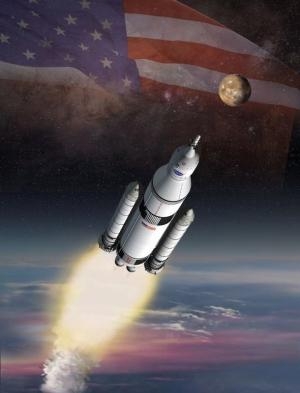Fri, Dec 13, 2013
ATK Achieves 'Significant Milestone' As Booster Integrator
NASA and ATK have successfully completed two key avionics tests for the solid rocket boosters for the space agency's new heavy lift rocket, the Space Launch System (SLS). The avionics tests, called hot fires, operate the booster's thrust vector control (TVC) system as if the booster were actually launching the SLS on a mission. The tests were conducted at ATK's Promontory, Utah, facility and represent a significant milestone as well as validation of SLS cost-saving efforts. As booster integrator, ATK has diligently focused on cost improvements for NASA's deep space exploration program to deliver affordable innovation.

"ATK has integrated value stream efficiencies across our SLS booster supply chain to achieve significant cost improvements," said Charlie Precourt, vice president and general manager of ATK's Space Launch division. "As such, we have been able to design, develop, test and streamline operations as we prepare for the first launch in 2017."
The new, advanced avionics system is a critical aspect of the twin SLS boosters, providing power distribution, communication with the flight computers, booster ignition, command and control of the booster steering system and booster staging. The tests simulated SLS launch sequences both in preflight checks and in an ascent profile by verifying communication between ground and flight systems, starting motor ignition and moving the TVC system. The successful testing validated the new SLS booster avionics subsystem and electronic support equipment (ESE). Training and evaluating the test team was an additional component of the test as team members were subjected to a variety of atypical conditions during simulated countdowns and firings. People, processes and tools were evaluated to strengthen and enhance performance at launch. "Knowledge transfer is one of the most critical aspects of the avionics test and one of the most rewarding," said Precourt. "It's inspiring to see our early career employees train
on this modernized system, armed with knowledge passed on to them by our world-class Space Shuttle team."
Other test objectives included validating the new electronic support equipment that replaced heritage ground equipment. Much of the equipment replaced was designed and built during the mid- to late-1970s and was successfully used on all 53 of the Space Shuttle Reusable Solid Rocket Motor and three 5-segment development motors static motor firings. The innovative equipment demonstrated in these tests dramatically reduces cost and increases reliability of the booster system.
(Image provided by NASA)
More News
Aviation Governance Secured...At Least For a While The National Business Aviation Association similarly applauded the passage of the FAA's recent reauthorization, contentedly recou>[...]
Emphasis On Growing The Future of Aviation Through Concentration on 'AFFORDABLE FLYERS' It's been a number of years since the Latest Edition of Jim Campbell's HUGE SportPlane Resou>[...]
Amazilia Aerospace GmbH, Develops Digital Flight Control, Flight Guidance And Vehicle Management Systems Textron eAviation has acquired substantially all the assets of Amazilia Aer>[...]
Honeywell's Primus Brings New Tools and Niceties for Hawker Operators Hawker 4000 business jet operators have a new installation on the table, now that the FAA has granted an STC f>[...]
Company Celebrates Niche-but-Important Advancement in Industry Standards Echodyne has announced full integration of its proprietary 'EchoFlight' radar into the e American Aerospace>[...]
 Bolen Gives Congress a Rare Thumbs-Up
Bolen Gives Congress a Rare Thumbs-Up The SportPlane Resource Guide RETURNS!!!!
The SportPlane Resource Guide RETURNS!!!! Buying Sprees Continue: Textron eAviation Takes On Amazilia Aerospace
Buying Sprees Continue: Textron eAviation Takes On Amazilia Aerospace Hawker 4000 Bizjets Gain Nav System, Data Link STC
Hawker 4000 Bizjets Gain Nav System, Data Link STC Echodyne Gets BVLOS Waiver for AiRanger Aircraft
Echodyne Gets BVLOS Waiver for AiRanger Aircraft



